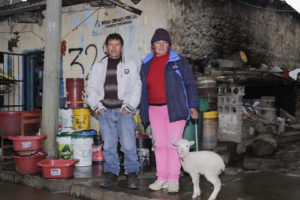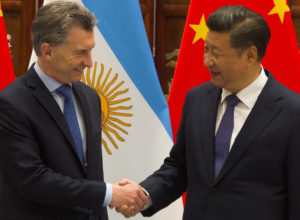Last week, the Vice President of the European Investment Bank (EIB), the European Union’s policy bank, met top government officials in Nepal to discuss funding renewable energy and sustainable development for rural communities. The bank is already investing in various hydropower sector projects in the country, and contributing to Nepal’s ambitious plans to develop 4,000 kilometres of transmission lines and 40,000 megawatts of hydropower generation by 2040. While the EIB seeks to increase its footprint in Nepal’s energy sector, the experiences of communities in Lamjung district of Nepal, aggrieved by the EIB-funded 220 kV Marsyangdi Corridor transmission line, suggest the bank must pay closer attention to addressing potential impacts faced by local communities, if its investments are to be successful.
The negative impacts of hydropower generation – including forced displacement, reservoir induced seismicity, disruptions to wildlife, and reduced output during dry seasons – are well documented. However, the impacts of transmission lines, including resulting human rights violations, are lesser known and discussed.
There have been numerous disputes in Nepal between communities affected by transmission lines, and project developers. Central to these disputes is the failure of developers to adequately consult and compensate local communities for various impacts that disrupt their livelihoods, cultural norms, and social fabric.
Many affected communities are anxious about the potential health and safety impacts of transmission lines, including electrocution, electromagnetic radiation, and increased lightning. These concerns have all been documented in their complaint to the EIB. While the concerns with toppling towers has been independently verified, the connection between the transmission lines and radiation as well as increased lightning is not scientifically corroborated, nevertheless these remain issues that the communities are concerned about, and towards which no real communication has happened to assuage their anxieties. The World Health Organisation has, as well, encouraged a dialogue on the risks of radiation from transmission lines.
Affected communities are also concerned about environmental impacts including deforestation, forest fragmentation, ecological disruption to birds and animals, and cumulative impacts from associated hydropower projects which need transmission lines to be economically viable. Additionally, landowners are prevented from building infrastructure or planting trees below transmission lines, and banks tend not to accept the property as collateral for loans. This leads to a decrease in the earning capacity as well as the value of the land.
Minimal benefits from transmission lines
Despite suffering significant impacts from transmission lines, affected Nepali communities tend to receive minimal benefit from such projects. Transmission lines consist of a series of towers with wires strung between the tops of the towers. Landowners whose lands are used to build towers are given 100% compensation for land under the towers. However, over 95% of the land used for transmission lines falls under the transmission wires between the towers, and is compensated at only 10% of market value. Affected communities also complain about lack of information about projects. As a result, multiple high-voltage electricity transmission lines in the country have encountered opposition from local communities, including indigenous peoples, Dalits, and other marginalized communities, many of whom are seeking a stronger voice in project design.
Internationally, there is increasing recognition of the various impacts of transmission lines on communities, and the need to engage with affected peoples and compensate at the individual and community level. An increasing number of governments and project companies in Europe, North America, and elsewhere – who have been extending their transmission networks, largely to transport newer, zero emission generation – have taken steps to provide significant community-level benefits, and fair compensation to individual land owners, often more than 100% of the value of land under the transmission line. They also provide better information disclosure and consultation about the projects and their impacts.
A consortium of European transmission operators and civil society organizations have organized as the Renewables Grid Initiative to collect and codify experiences in this regard, including the technically challenging issue of how to involve communities in early routing determinations, and when and how to undertake modifications to avoid harm. Indeed, many developed countries have much stronger protections for landowners at home than when they invest in Nepal’s transmission sector.
Unfortunately, communities in Nepal who request that transmission lines respect their rights are labelled as anti-development and extortionist. The importance of transmission lines to Nepal’s hydropower energy gold rush is used to justify irregularities in project completion, and ignore affected peoples’ grievances. Peaceful protests have been dispersed by armed paramilitary forces, and communities have faced detention, false criminal cases, and other forms of intimidation for raising their voices. Community land rights are dismissed under pretexts that a developing country like Nepal cannot afford to pay its citizens as much as developed countries. However, communities are only asking to be paid in full for the harms they have suffered, nothing more. This is a fundamental tenet of Nepali property law.
The problems in Lamjung
Communities in Lamjung district of Nepal affected by the EIB funded 220 kV Marsyangdi Corridor transmission line are one example of a community raising its voice. The Nepal Electricity Authority (NEA), the government-owned institution responsible for implementing the Marsyangdi Corridor, is expected to start construction imminently. However, many community members are still in the dark about the transmission line, which will pass through their homes, businesses, lands, and community forests. Frustrated, the communities recently filed a complaint with the independent Complaints Mechanism at the EIB. Communities want more information about the route of the line, as well as its health, safety, economic, and environmental impacts.
Many Lamjung community members are especially frustrated because they have recently had their land taken for a different Chinese funded 132 kV transmission line. The communities have alleged corruption in the implementation of that line, and say it was constructed without adequate information disclosure or compensation. Some community leaders have met with the NEA, and asked it to remedy gaps in the 132 kV line before beginning work on the 220 kV line. The NEA, acknowledged the need to improve transmission line policy and assured communities that mistakes will not be repeated, but appears to be going ahead with the 220 kV Marsyangdi Corridor without any changes.
Stakeholders in Nepal’s energy sector, including the EIB and NEA, should consider consultatively implementing recommendations made in a recently-released expert report on preventing conflicts in transmission lines. The report was developed for the World Bank by an international dispute resolution firm, and recommended a policy dialogue on benefits sharing with local communities, and exploring alternative ways and means of meeting local energy and economic needs, including for ecological resources.
Once underlying policy gaps are addressed, individual transmission line projects must consult with communities, especially indigenous communities, in a process to seek their consent.
Good business sense
There are instrumental reasons for projects to build productive relationships with indigenous peoples and local communities over the life of a project, including effectively engaging from the beginning. Resulting costs are likely to be substantially less than the price of responding to conflicts, especially when delays are factored in.
Given the strong business case to change how transmission lines are implemented in Nepal, the European Union must ensure that communities are made whole on the loss they suffer as a result of its transmission lines and associated hydropower sector development. This will help ensure that the European Union is meeting its stated goal of supporting sustainable development in Nepal.
![<p>Chinese implemented 132 kV Bhulbhule Mid-Marsyangdi high voltage transmission line in Lamjung district, Nepal, July 2018 [image courtesy: The Accountability Counsel]</p>](https://dialogue.earth/content/uploads/2018/11/DSC_0296.jpg)





![Solar panel lighting being maintained in Tinginaput, India [image by Abbie Trayler-Smith / Panos Pictures / Department for International Development]](https://dialogue.earth/content/uploads/2016/11/solar-India-DfID-300x200.jpg)
![From left to right: the Norwegian Ambassador to India Nils Ragnar Kamsvåg, the Secretary of the Indian Ministry of Earth Sciences M. Rajeevan, the Director of NCPOR M. Ravichandran,the Director of CSIR’s National Institute of Oceanography Sunil Singh, the research director of the Norwegian Polar Institute, Nalân Koç, and Special Advisor to the Research Council of Norway Jon Børre Ørbæk [image courtesy: Norwegian Embassy in India]](https://dialogue.earth/content/uploads/2018/12/DSC_3311-300x200.jpg)
